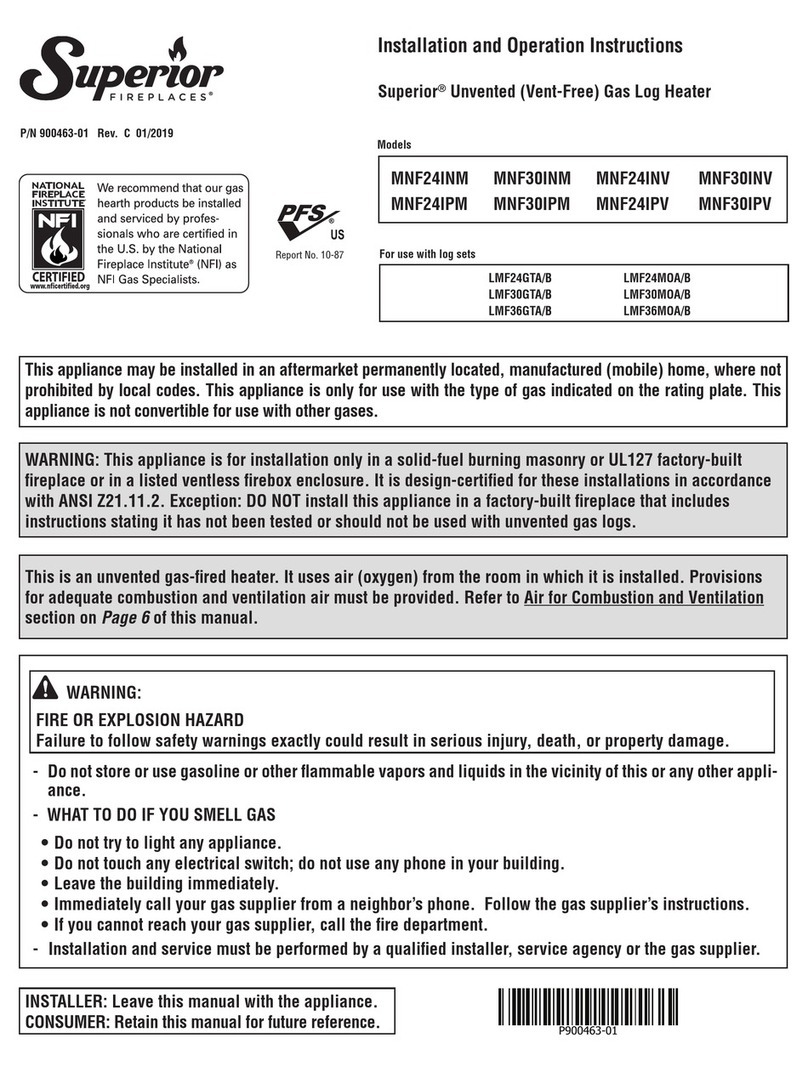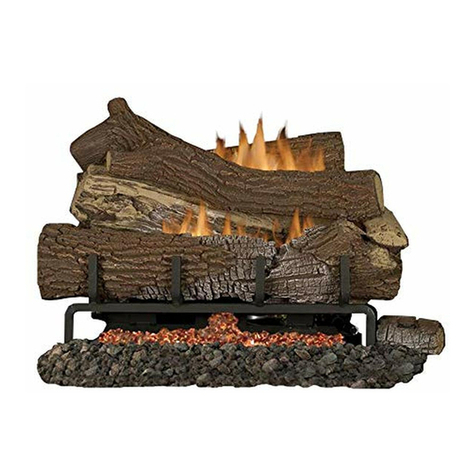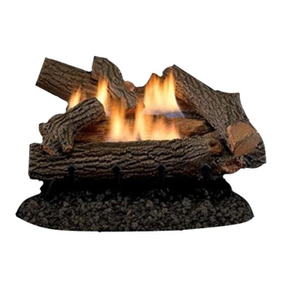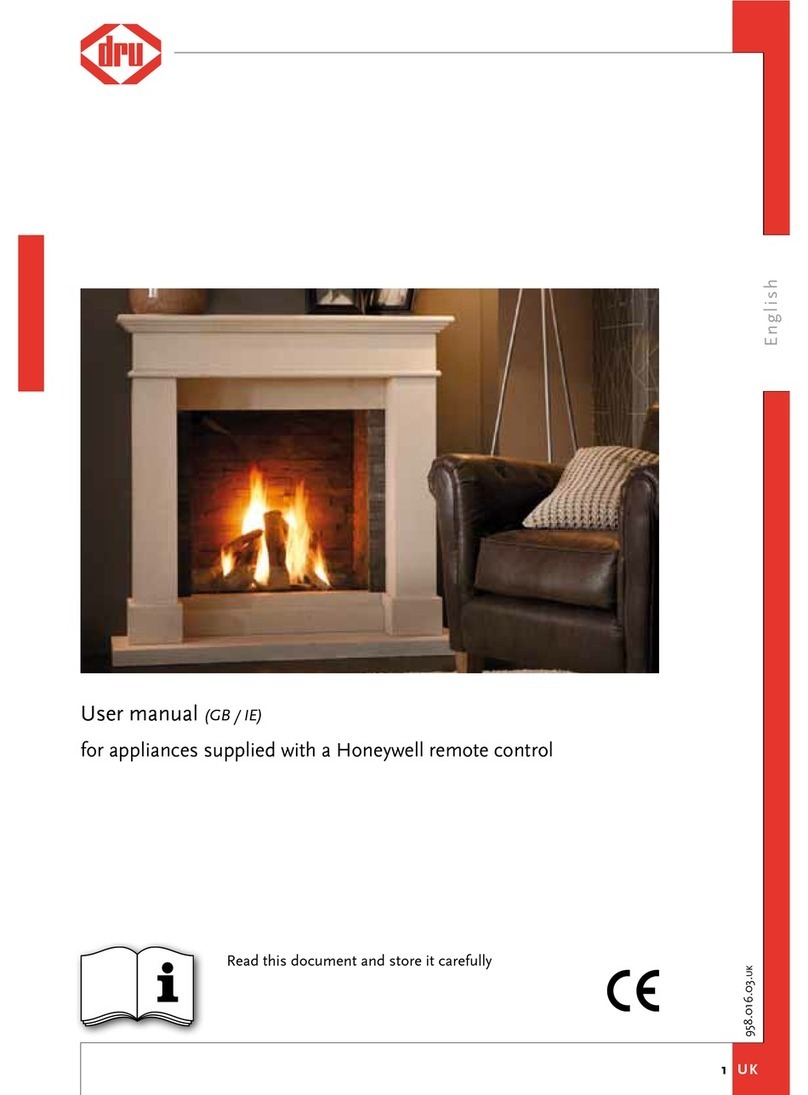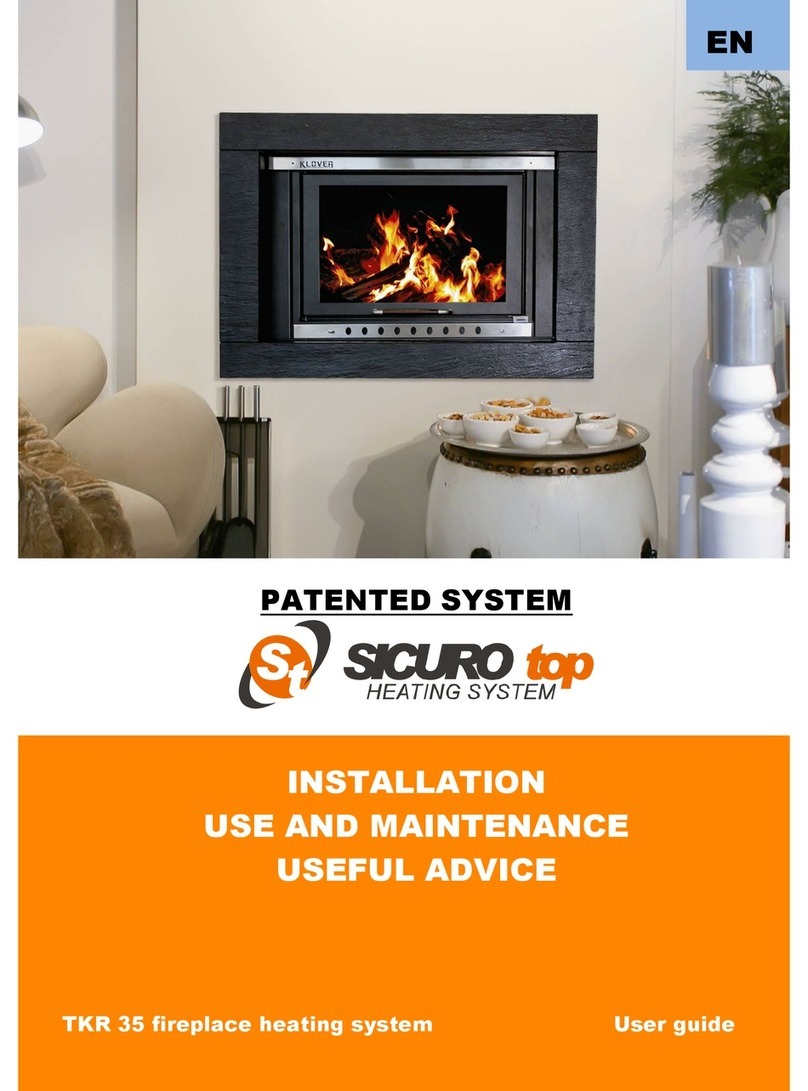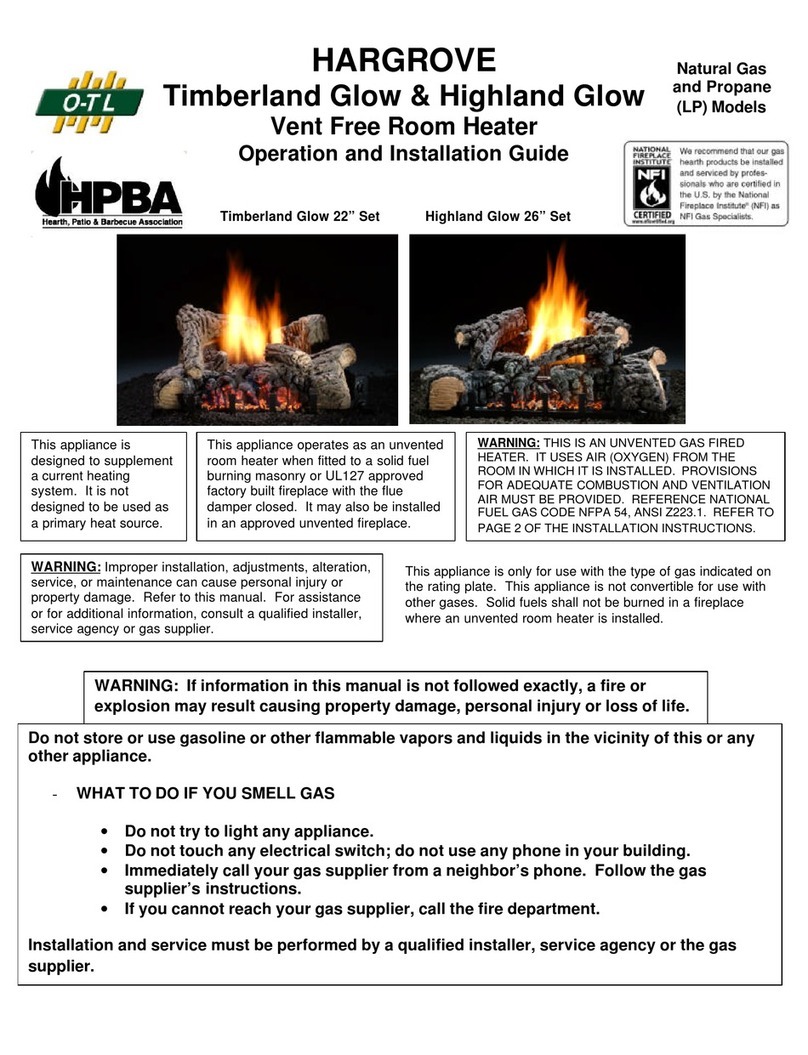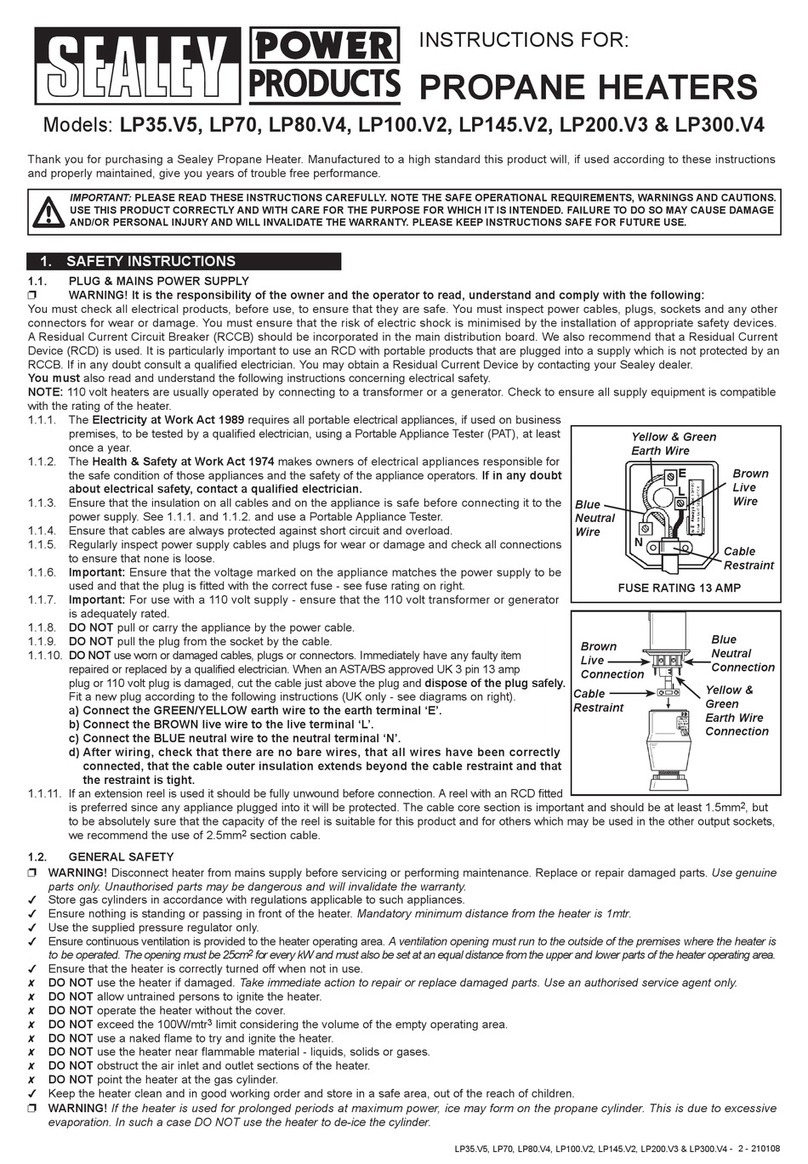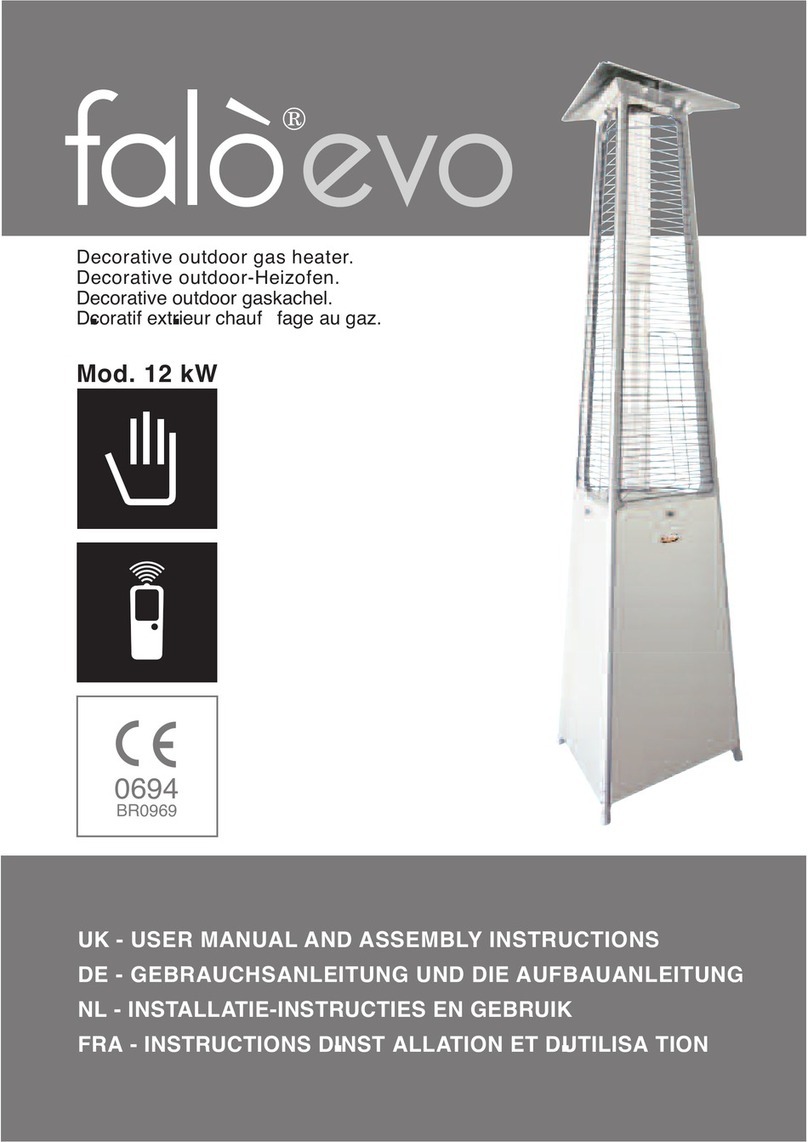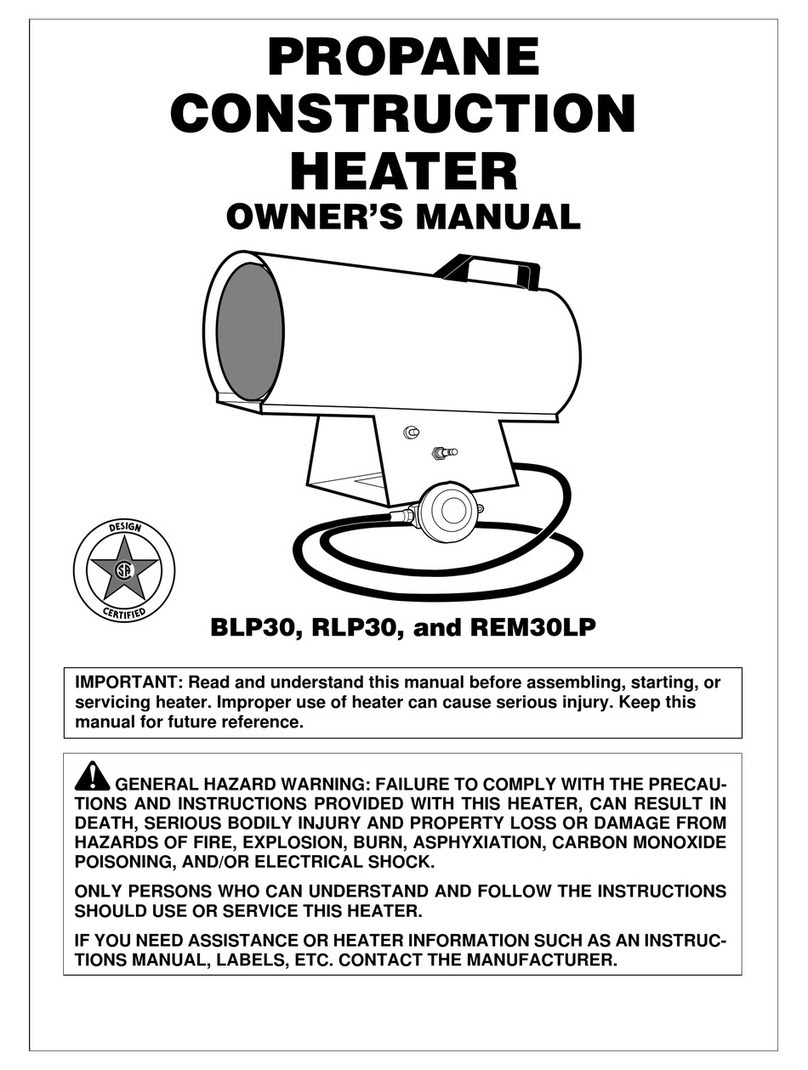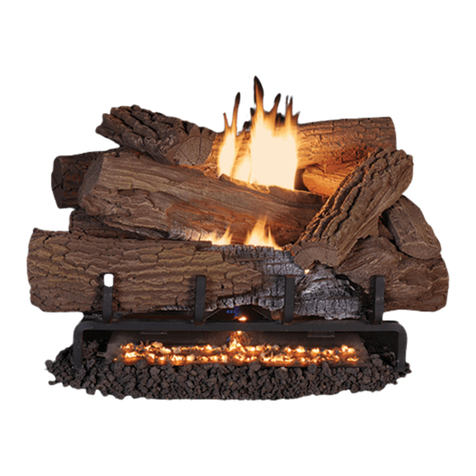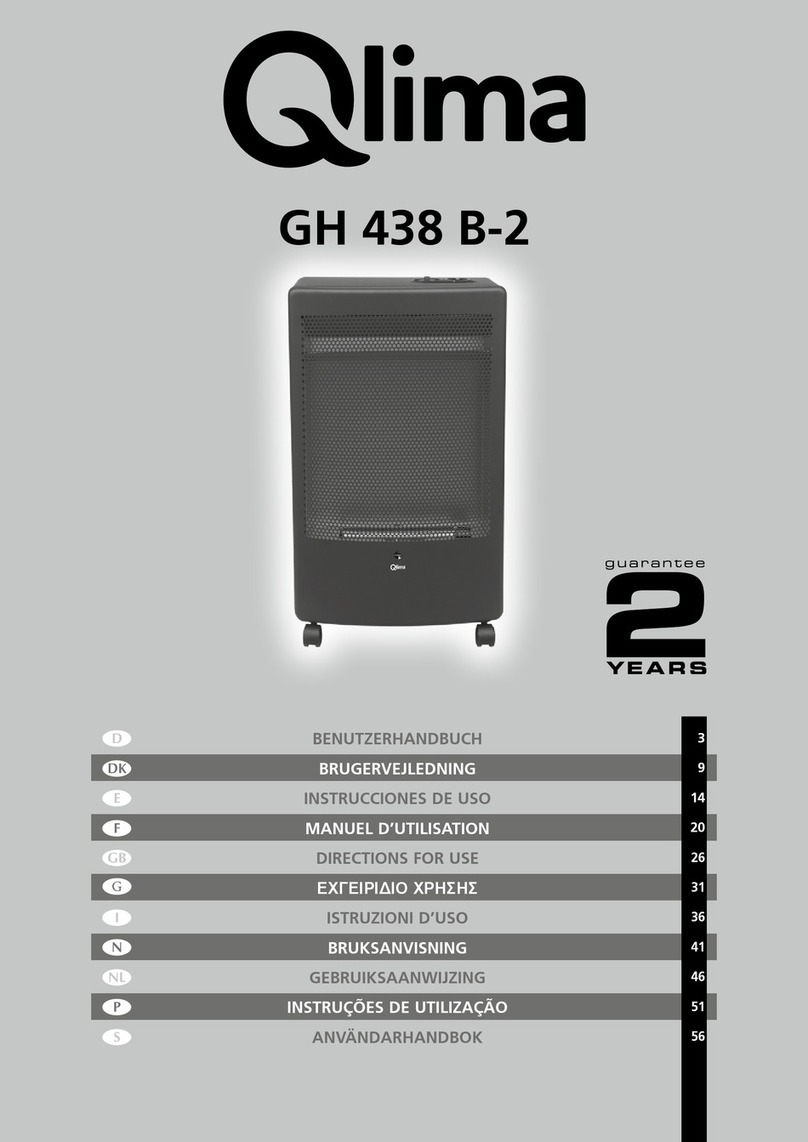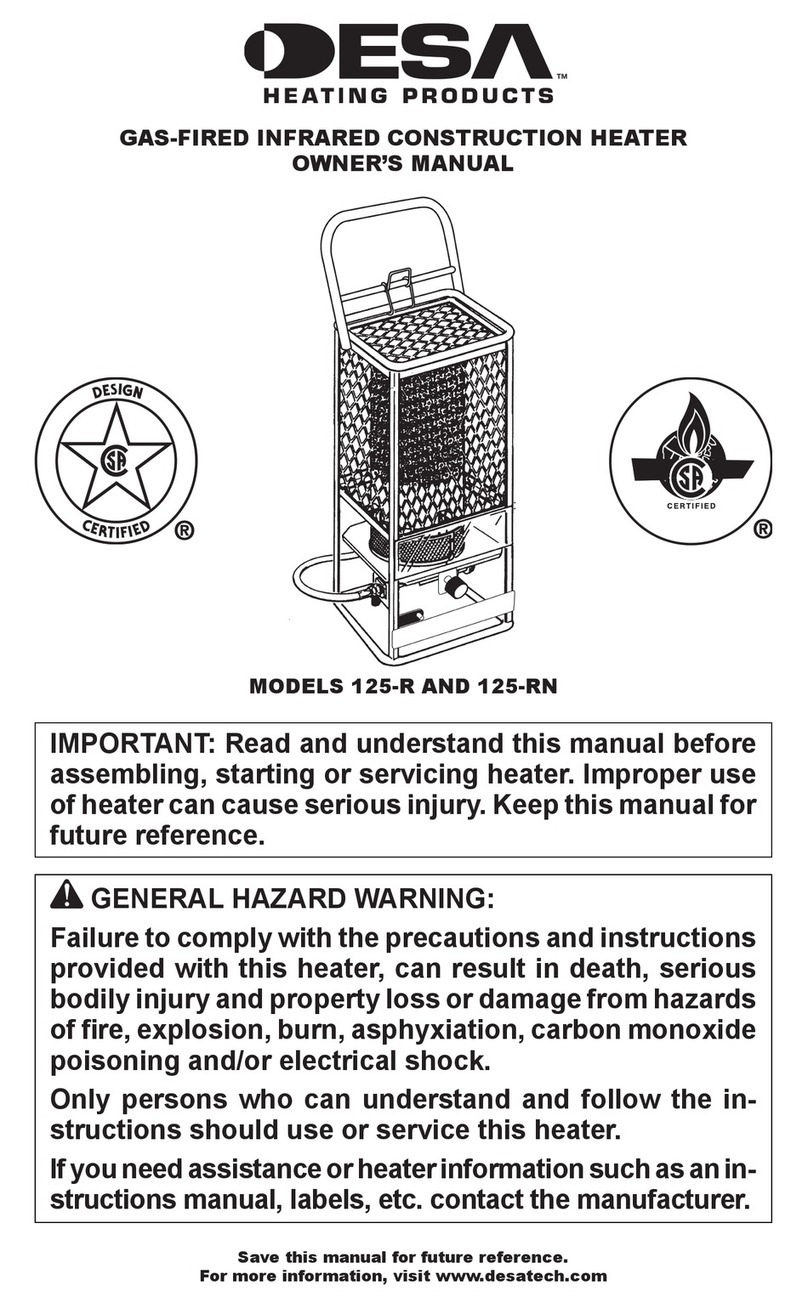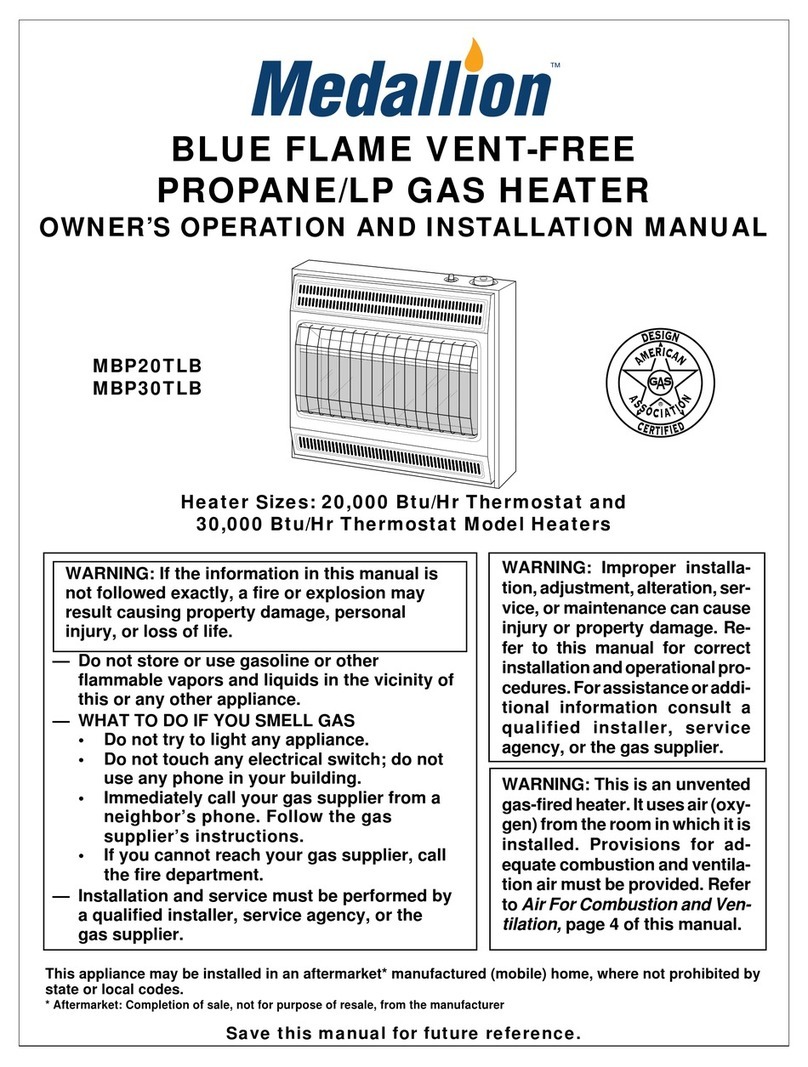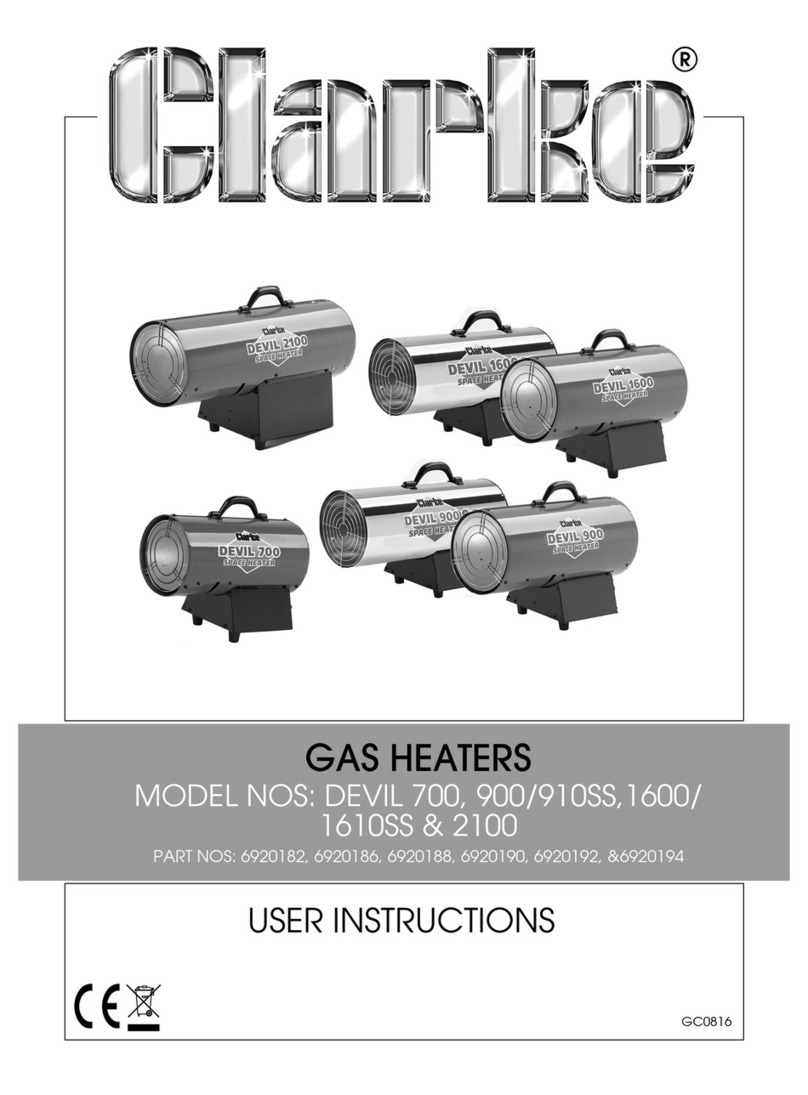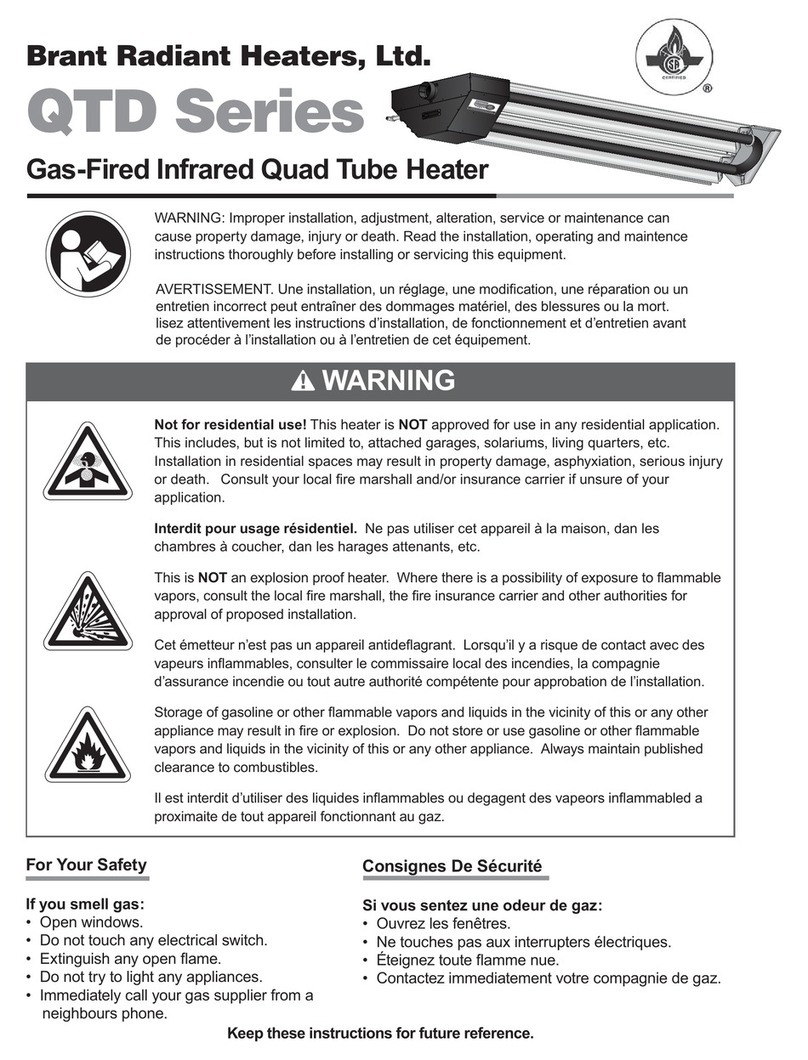
NOTE: DIAGRAMS & ILLUSTRATION NOT TO SCALE. 3
The National Fuel Gas Code defines a confined
space as a space whose volume is less than
50 ft 3per1,000 BTU/Hr(4.8 m3perkw) of the
aggregate input rating of all appliances in-
stalled in that space and an unconfined space
asaspacewhosevolumeisnotlessthan50ft 3
per1,000BTU/Hr(4.8 m3perkw)oftheaggre-
gate input rating of all appliances installed in
thatspace.Roomscommunicatingdirectlywith
thespaceinwhichtheappliancesareinstalled,
throughopeningsnotfurnishedwithdoors,are
considered a part of the unconfined space.
Unusuallytightconstructionisdefined ascon-
struction where:
a. wall and ceilings exposed to the outside
atmosphere have a continuous water vapor
retarder with a rating or one perm or less with
openings gasketed or sealed, and
b. weather stripping has been added on oper-
able windows and doors, and
c.caulkingorsealantsareappliedtoareassuch
as joints around window and door frames,
between sole plates and floors, between wall-
ceiling joints, between wall panels, at penetra-
tions for plumbing, electrical, and gas lines,
and at other openings.
Usethefollowingequationstodetermineifyou
have a confined or unconfined space.
1.Determine the volume of space — ft 3.
Length x Width x Height = _____ ft 3
(Includeadjoiningroomswithdoorlesspas-
sageways or ventilation grills between
rooms.)
Example:24'(L)x16'(W)x8'(H)=3072ft 3
2.Divide the volume of space by 50 ft 3to
determine the maximum BTU/Hr the space
can support.
______ (volume of space – ft 3)/ 50 ft 3=
(Maximum BTU/Hr the space can support)
Example: 3072 ft 3/ 50 ft 3= 61.44
or 61,440 BTU/Hr the space can support.
3.Add the BTU/Hr of all the fuel burning appli-
ances in the space.
Vent-Free heater _______ BTU/Hr
Gas appliance #1* _______ BTU/Hr
Gas appliance #2 + _______ BTU/Hr
Total = _______ BTU/Hr
Massachusetts And New York Require-
ments
Theseappliancesareapprovedforinstallation
in the following USA locations listed in the
following:
Massachusetts:
These fireplaces are approved for installation
intheUS state ofMassachusettsif thefollow-
ing additional requirements are met-
• Installation and repair must be done by a
plumberorgasfitterlicensedintheCommon-
wealth of Massachusetts.
•Theflexiblegaslineconnectorusedshallnot
exceed 36 inches (92 centimeters) in length.
• The individual manual shut-off must be a T-
handle type valve.
•Vent-FreeappliancesmayNOTbeinstalledin
bedrooms or bathrooms.
• A working smoke detector must be installed
in the area where vent-free appliances are
installed.
Seller of unvented propane or natural gas-
fired supplemental room heaters shall pro-
videtoeachpurchaseracopyof527CMR30
upon sale of the unit.
New York:
These fireplaces are approved for installation
in the US state of New York, but not in New
York city.
Stateorlocalcodesmayonlyallowoperationof
thisappliance(manualversiononly)inavented
configuration. Check your state or local codes.
Superior Unvented Gas Log Room Heaters are
certified by OMNI to ANSI Z21.11.2 standard.
These gas log room heaters may be used as a
spaceheatsourceforaroominconjunctionwith
an approved unvented firebox. Additionally,
manuallycontrolledunitsaredesigncertifiedby
OMNI to ANSI 21.60 as a vented gas log set.
COMBUSTION AND VENTILATION AIR
These heaters shall not be installed in a con-
fined space. The heater may be located in
unusually tight construction provided the
space is unconfined, or if confined, is pro-
videdwithtwopermanent openingscommu-
nicating directly with an additional room(s)
of sufficient volume so that the combined
volume of all connected spaces meets the
criteria for an unconfined space, (National
Fuel Gas Code ANSI Z223.1 (latest edition),
Section5.3). Generally 50ft 3per1,000 BTU
inputofalloperatingappliancesinthespace.
•Allow the heater to cool before servicing.
Always shut off the gas to the heater while
performing service work.
•Do not install the heater in a bedroom or
bathroom.
•The installation must conform with local
codesor,intheabsenceoflocalcodeswiththe
National Fuel Gas Code, ANSI Z223.1.
•The heater and its individual shut-off valve
must be disconnected from the gas supply
pipingsystemwhileperforminganytestsofthe
gas supply piping system at pressures in ex-
cess of 1/2 psig.
•The heater must be isolated from the gas
supply piping system by closing its individual
manualshut-offvalveduringanypressuretest-
ing of the gas supply piping system at test
pressures equal to or less than 1/2 psig.
•Keep heater area clear and free from com-
bustible materials, gasoline and other flam-
mable vapors and liquids.
•Do not use this heater if any part has been
under water. Immediately call a qualified ser-
vice technician to inspect the room heater and
to replace any part of the control system and
any gas control which has been under water.
•InputratingsareshowninBTUperhourand
areforelevationsupto4,800feet.Donotinstall
thisheateratanelevationabove4,800feetifthe
gassupplyhasnot been deratedforthateleva-
tion. Consult your local gas supplier. (For op-
eration at elevations above 4,800 feet, equip-
ment ratings shall be reduced at the rate of 4
percent for each 1,000 feet above sea level
beforeselectingappropriatelysizedequipment.)
•Ensurethat theheater isclean whenoperat-
ing.Excessivedustaccumulationontheburner
and/orlogs willincrease theamount ofcarbon
monoxide formation and could lead to carbon
monoxide poisoning and/or death.
•DONOTinstallthisheaterintoasingle(front)
openingfireplace. Thisheater isdesignedto be
usedinsee-through(multi-open)fireplacesonly.
CODES
Adheretoalllocalcodesorintheirabsencethe
latest edition of The National Fuel Gas Code
ANSIZ223.1orNFPA54whichcanbeobtained
from The American National Standards Insti-
tute, Inc. (1430 Broadway, New York, NY,
10018)orNationalFireProtectionAssociation,
Inc.(Batterymarch Park,Quincy, MA, 02269).




